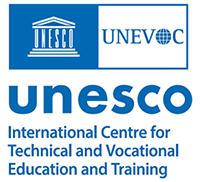
The UNESCO-UNEVOC International Centre: Who We Are | What We Do | Working With Us | Get in Touch
The UNEVOC Network: Learn About the Network | UNEVOC Network Directory
For Members: UNEVOC Centre Dashboard
Thematic Areas: Inclusion and Youth | Digital Transformation | Private Sector Engagement | SDGs and Greening TVET
Our Key Programmes & Projects: BILT: Bridging Innovation and Learning in TVET | Building TVET resilience | TVET Leadership Programme | WYSD: World Youth Skills Day
Past Activities: COVID-19 response | i-hubs project | TVET Global Forums | Virtual Conferences | YEM Knowledge Portal
Our Services & Resources: Publications | TVET Forum | TVET Country Profiles | TVETipedia Glossary | Innovative and Promising Practices | Toolkits for TVET Providers | Entrepreneurial Learning Guide
Events: Major TVET Events | UNEVOC Network News
Organized by UNESCO-UNEVOC International Centre and moderated by James Keevy and Kelly Shiohira, JET Education Services

Many of the professions most likely to be affected by AI are integrally linked with technical and vocational education and training (TVET). While some jobs will be completely automated, many more will incorporate some degree of automation. An estimated 61% of the jobs are comprised of a medium or high (above 30%) volume of tasks that are susceptible to automation. This trend is more perceivable in middle-skill jobs, whose routine-oriented work, repetitive tasks and predictable environment can be easily replaced by machines. This speaks to the changing set of skills, including improved digital and transversal skills, which institutions must develop in order to ensure continued employability of their students.
Education systems that are responsive to labour market demands will incorporate AI both in the way the TVET system operates and in the education and training provided to students. In fact, a large part of Sustainable Development Goal 4 talks about education systems’ responsiveness to both social and labour market demands in order to produce citizens who are socially and economically active within their societies. The emphasis of this discussion was on the latter aspect, particularly in relation to the ability of TVET systems to leverage AI to maximize their own processes and to ensure students are adequately prepared for the current labour market. In the field of education, AI offers opportunities to improve governance, delivery and alignment with other sectors. Many educational institutions are already leveraging AI in various ways to meet their objectives.
The virtual conference engaged participants to: